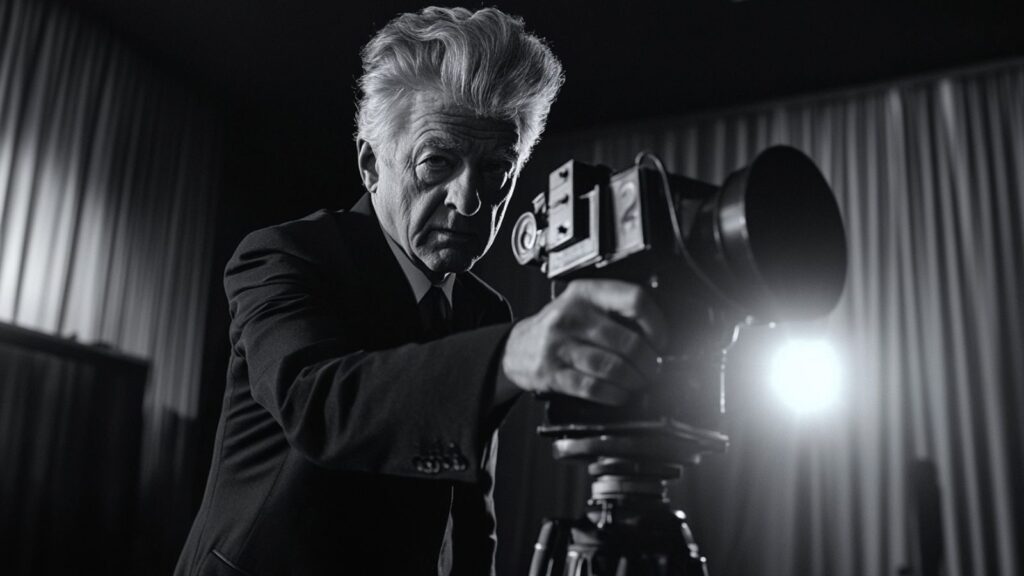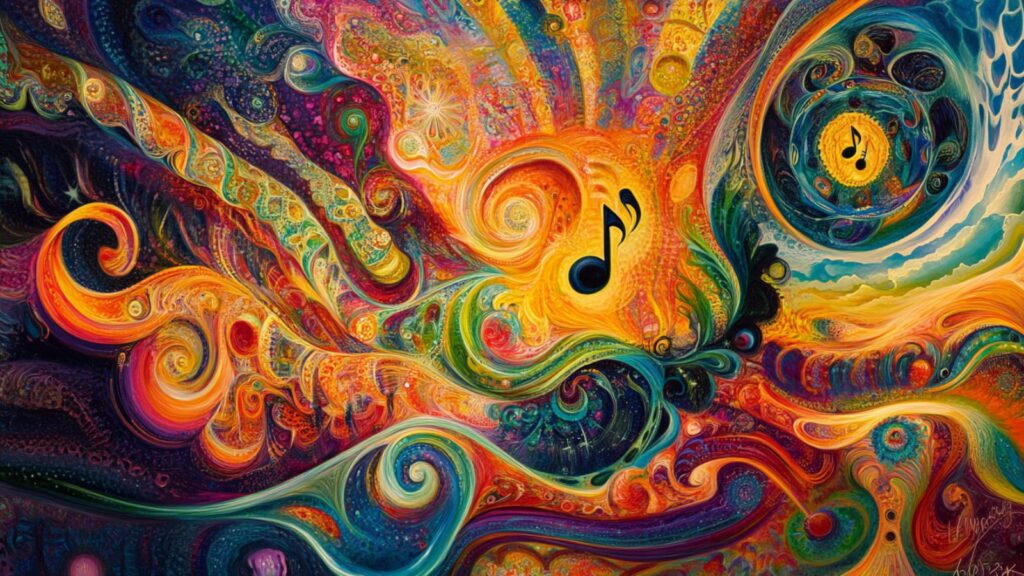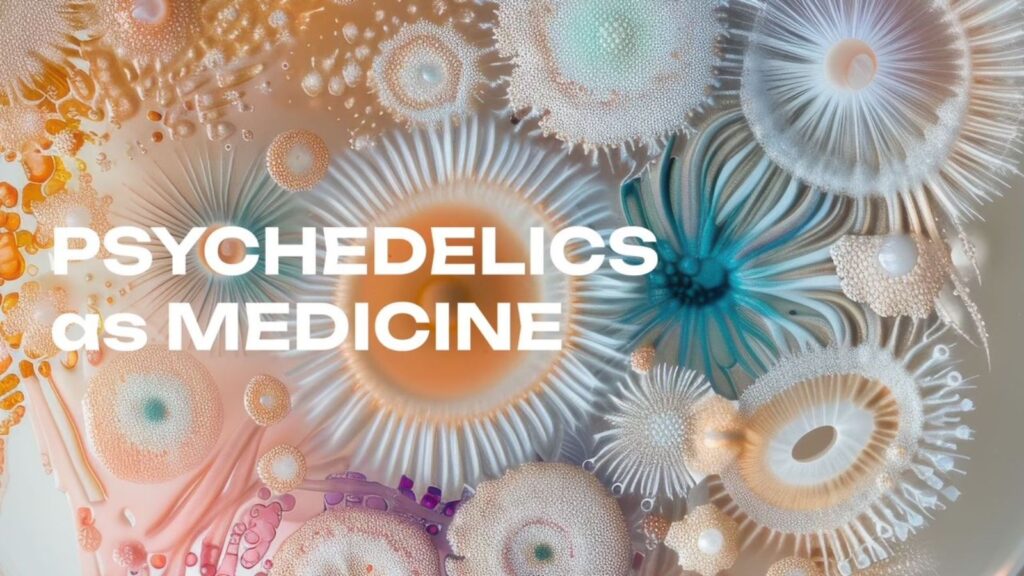In 1938, Dr. Albert Hofmann synthesized lysergic acid diethylamide (LSD) while working at Sandoz Pharmaceutical in Basel, Switzerland. He intended to create a blood stimulant and didn’t realize the hallucinogenic effects until 1943, when he accidentally consumed the substance while working in the lab.
For the next couple of decades, psychiatrists used LSD to study behavioral and personality changes and to treat addiction, depression, psychosomatic diseases, and other mental health conditions. The U.S. Army and the CIA experimented with LSD as a truth serum for interrogation. But researchers did not uncover the ideal medical use for this psychedelic substance. Then free samples that Sandoz Pharmaceuticals distributed to the public largely grew the user base of this fascinating drug.
Like many substances, LSD was born in a laboratory and made its way to the public for recreational use. Few drugs have become as synonymous with a psychedelic trip as LSD, which is commonly referred to as “acid.” Having made its imprint on music, art and culture worldwide, LSD was here to stay. And what is more fashionable than a mind-altering substance served up on a beautiful piece of art? Thus, LSD blotter art was born.
What Is LSD Blotter Art?
The U.S. government first banned the use of LSD in California in 1966. Many other states and countries soon followed suit. However, that didn’t slow its use. Instead, people were finding creative ways to consume this psychedelic drug. Originally, LSD was packaged into pills, or the liquid was dropped onto sugar cubes. But in an era amplified by hippie culture, flower power and freedom of expression, the creation of LSD blotter art solidified the cultural significance of this potent psychedelic.
It wasn’t just a drug—it was an entire, often inexplicable experience. The method of transportation and consumption wasn’t the only creative element. It was the way LSD looked that also changed the experience in a way. As the hallmark drug of the ’60, LSD was the perfect accoutrement for all hippies and beatniks, psychonauts and explorers. And its presentation was as unique as the users themselves, inspired by a generation of artists.
What Is a Blotter?
After becoming illegal, LSD continued to be distributed through underground channels. In order to safely hide the drug, chemists popularized the method of using a “blotter.” Blotting paper is a highly absorbent paper whose invention was accidental, much like LSD. It was deemed inadequate for writing but was excellent for absorbing extra ink or liquid.
This was the perfect mechanism for transporting LSD. The square sheets of blotter paper were soaked in LSD, and the paper absorbed and dried quickly. Later, the sheets were perforated into even smaller squares, typically 100 per sheet. This is how LSD doses are measured: one square = one hit.
Legally speaking, the laws were not reasonably representative of the substance and its form factor. For example, the same mandatory minimum sentence applied for one gram of LSD crystal and one gram sugar cube containing LSD. Consider that a one-gram sugar cube may only contain one hit of LSD, and a one-gram crystal of LSD was equal to 10,000 doses! This made the use of blotter that much more appealing since it was a lightweight and discreet method of transporting and distributing acid.
The ‘60s
This new medium of blotter art brought a particular beauty to drug use. Whether intended to be ingested or simply collected, blotter sheets branded drugs. This made for an almost secret society of psychonauts looking to expand their consciousness. Sure, chemists could use different sizes and colors of capsules to distinguish their products. But nothing was as personalized and captivating as LSD blotter art.
It allowed chemists to create easily identifiable drugs. In addition, at the time it was also a way to know that the drugs were legitimate and not a fake product. Using blotter paper as a delivery mechanism for LSD opened up a whole new world for branded drugs, served in style.
The influence LSD has had on Western culture is undeniable. It left a significant impression on the ‘60s and onward, though that decade’s generation was especially outspoken about dropping acid. During this decade, Timothy Leary—famed psychologist, writer, and psychedelic advocate—coined the catchphrase, “Turn on, tune it, drop out.”
From The Beatles to Hunter S. Thompson, Jimi Hendrix and Aldous Huxley, taking acid was a gateway to another way of viewing environments and processing what it means to be human. It influenced our internal and external worlds, inspiring and leaving behind a new era of artistic expression.
A Generation of Artists
By the 1970s, LSD blotter art was not only a way to brand a particular manufacturer’s drug, but it was also an interesting new medium for artists. What a strange, intriguing canvas, this square made of squares that were used to transport drugs! In a Vice interview from 2014, LSD blotter art collector Mark McCloud talks about the shift in the artistic vision:
“There’s a whole vignette of imagery that appears throughout that era, and it’s usually on sheets of paper the same size as an LP so they could ship it dressed as a record. The first sheets would have a single image that would be divided up into the tabs, usually in a single color. They quickly became individual pictures, though, with great detail.”
—Mark McCloud
A wide collection of artists created the art found on blotter sheets. Mati Klarwein, who in the words of Andy Warhol was “The most famous unknown painter in the world,” was inspired deeply by his own use of LSD and other psychedelic drugs. He created album covers for artists like Santana, Jimi Hendrix, Miles Davis, and Earth, Wind & Fire. His artistic style was extremely psychedelic, featuring bold colors and provocative imagery. Klarwein worked with fellow artist Robert Venosa to create Santana’s Abraxas album cover, which was later turned into LSD blotter art.
The Original Collector: Mark McCloud
Mark McCloud was the first collector of blotter art. He promoted and upheld this art form’s uniqueness. McCloud has been living in San Francisco since 1971. He is a painter and former art professor. He took an interest in LSD at a young age and was particularly fascinated by blotter’s delivery mechanism. Though it was easy to obtain sheets dipped in LSD, it was challenging to get the blotter art sans LSD.
Eventually, he was able to earn the trust of the artists and chemists. So his collection of LSD blotter art grew, and for a time he was stashing sheets in his freezer for safekeeping. However, when Albert Hofmann’s LSD first became available, he figured the best way to preserve this particular sheet was to begin framing it to display in his home. Later on, he began to produce his own images for blotter art to display legally.
Today, McCloud has the largest collection of LSD blotter art in the world. He has shown his collection at galleries, and even won second place at the 1987 San Francisco County Fair for this unusual submission. Collecting thousands of tabs of LSD does not come without some negative attention.
McCloud has been arrested twice by the DEA on charges of intent to distribute LSD. The feds found 30,000 pieces of blotter art in his home and claimed he intended to sell to chemists who manufacture LSD. In each case, McCloud was acquitted of all charges. The blotter art in his collection that was dipped in LSD has since been exposed to ultraviolet light to destroy any chemical properties left on the paper.
The Institute of Illegal Images
McCloud’s collection includes historical and religious references, pop culture icons, cartoon characters, plants and animals, mythical symbols, musical memorabilia such as Grateful Dead album covers, and several signed pieces by the likes of Albert Hofmann and the Merry Pranksters.
The collection that started in the ‘70s now consists of over 400 framed prints and tens of thousands of unframed sheets. It is the most extensive collection in the world. These framed pieces live in his San Francisco home, which he has dubbed The Institute of Illegal Images. His website, Blotter Barn, showcases a fraction of his favorites as well as some of the more popular sheets.
Where to Get the Best LSD Blotter Art
Blotter art is still a popular delivery method for LSD, and it is made all over the world. Artists are still finding new ways to further enhance the experience of dropping acid. After all, what’s more desirable than tearing off a little square from a beautiful piece of artwork by Alex Grey? Furthermore, Shakedown Gallery sells several rare and vintage sheets, including work by Grey. Blotterart.com has a large collection and includes an option to create custom sheets. Ken Kesey’s son, Zane Kesey, has launched his own website selling psychedelic sheets, no doubt partially inspired by stories from his father’s life and times.
Where do you buy blotter art? Drop a comment below and let us know your favorite site. Be sure to sign up for our mailing list and never miss a drop of psychedelic news from Reality Sandwich.













